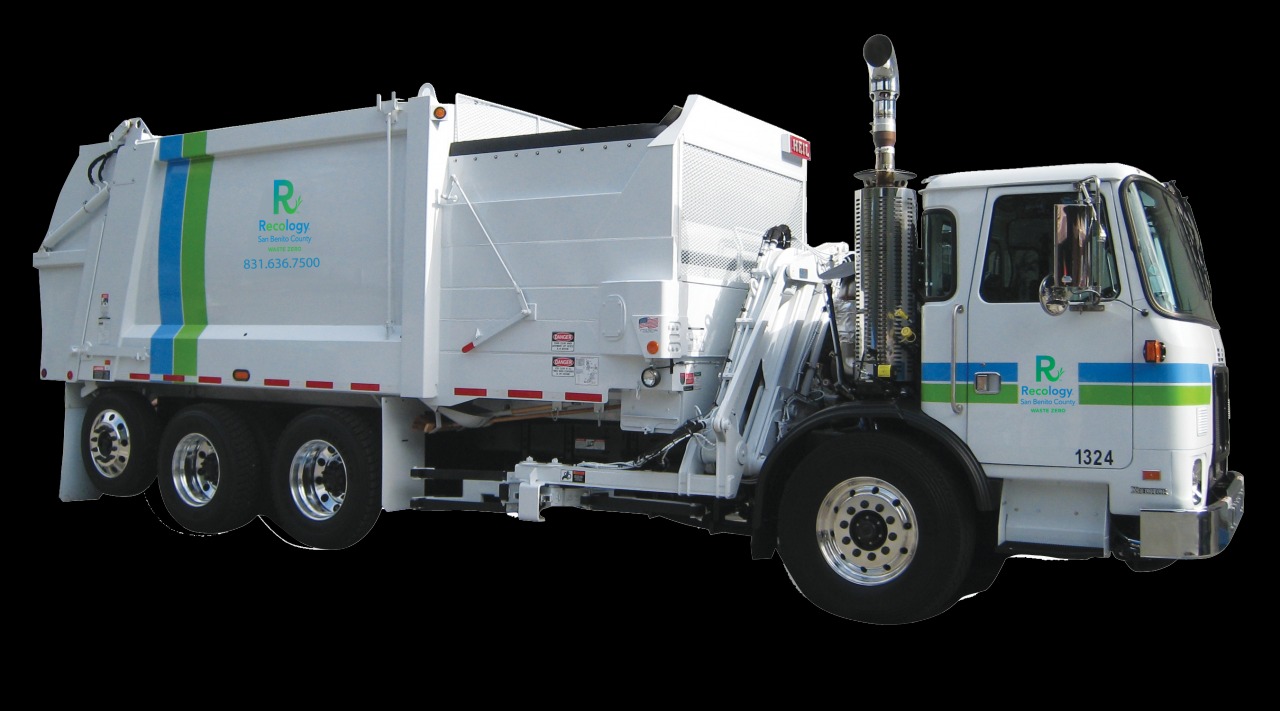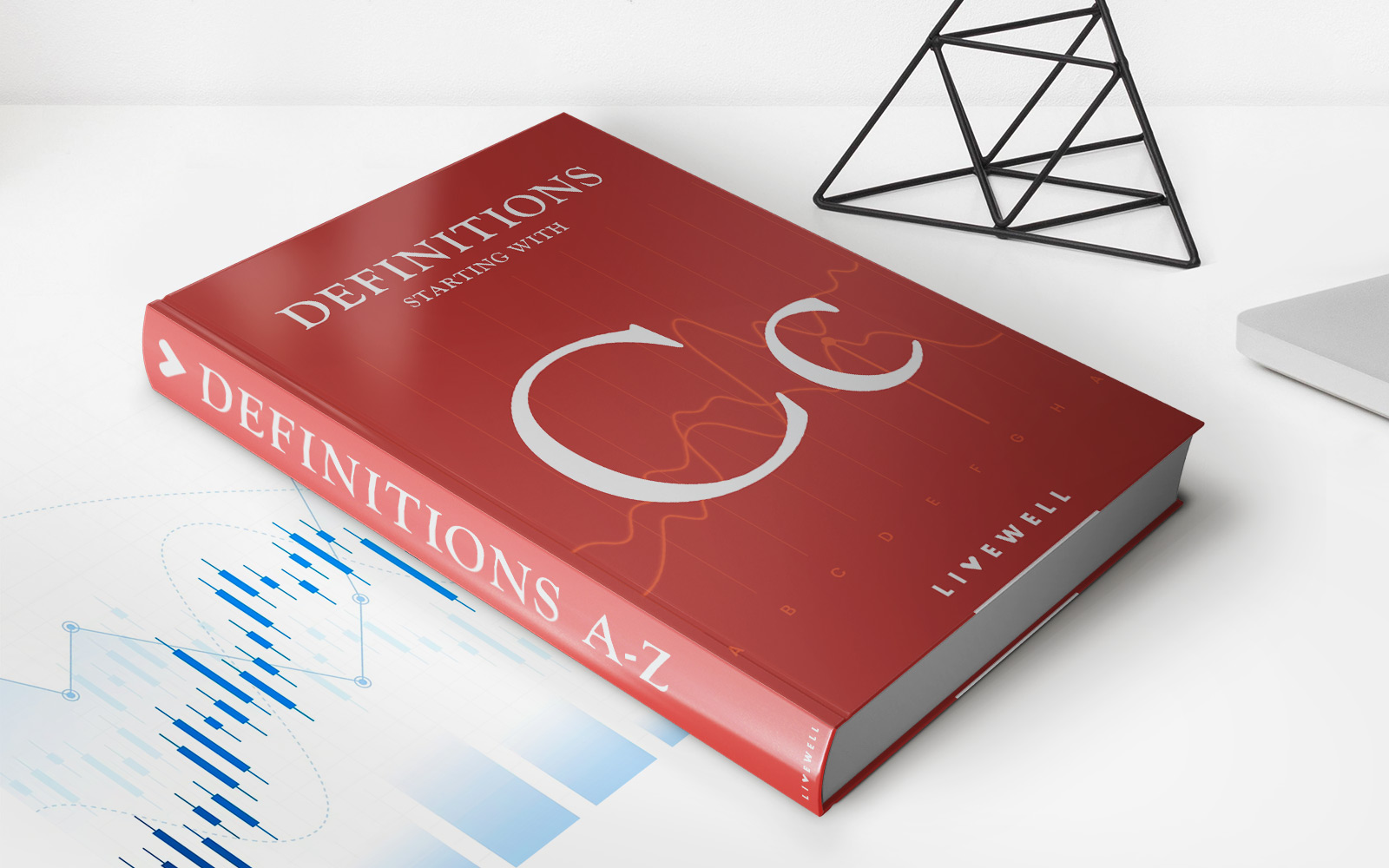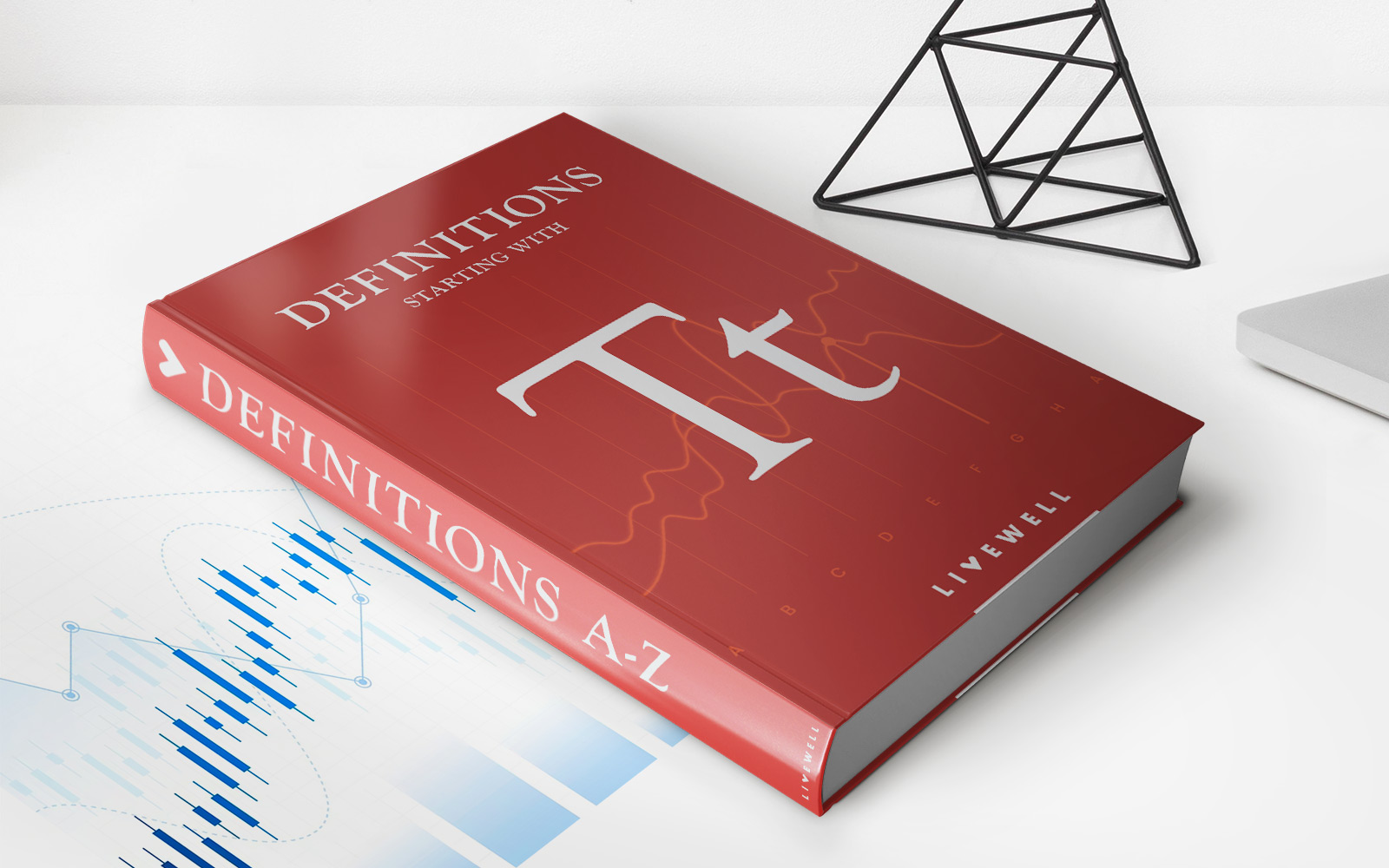Home>Finance>What Does Primary And Contingent Mean For Life Insurance


Finance
What Does Primary And Contingent Mean For Life Insurance
Modified: March 1, 2024
Learn about the primary and contingent beneficiaries in life insurance, and understand how they impact your financial planning. Explore the importance of these designations in securing your financial future.
(Many of the links in this article redirect to a specific reviewed product. Your purchase of these products through affiliate links helps to generate commission for LiveWell, at no extra cost. Learn more)
Table of Contents
- Introduction
- Primary Life Insurance
- Definition and Features
- Types of Primary Life Insurance
- Term Life Insurance
- Whole Life Insurance
- Universal Life Insurance
- Pros and Cons of Primary Life Insurance
- Contingent Life Insurance
- Definition and Features
- Types of Contingent Life Insurance
- Accidental Death and Dismemberment Insurance
- Critical Illness Insurance
- Disability Insurance
- Pros and Cons of Contingent Life Insurance
- Primary vs. Contingent Life Insurance
- Factors to Consider When Choosing Primary and Contingent Life Insurance
- Conclusion
Introduction
Life insurance is an essential component of a comprehensive financial plan. It provides financial protection for your loved ones in the event of your untimely death. When considering life insurance, it’s important to understand the different types of coverage available. Two common terms you may come across when researching life insurance are “primary” and “contingent.” In this article, we will explore what these terms mean and how they impact your life insurance coverage.
Primary life insurance refers to the main life insurance policy that you purchase to ensure financial security for your beneficiaries. It serves as the primary source of protection and payout in the event of your death. The primary policy is the first priority and provides the most significant level of coverage.
On the other hand, contingent life insurance refers to secondary or additional coverage that comes into effect when the primary policy cannot provide the full amount of insurance coverage. It is designed to supplement the primary coverage and offers an additional layer of financial protection.
Understanding the different types, features, and pros and cons of primary and contingent life insurance can help you make informed decisions when choosing the right coverage for your specific needs and circumstances.
Primary Life Insurance
Primary life insurance is the main policy that you purchase to provide financial protection for your loved ones in the event of your death. It is the first line of defense and serves as the primary source of coverage. This type of life insurance offers a death benefit payout to your beneficiaries when you pass away, helping to replace your income and provide for their financial needs.
There are different types of primary life insurance policies, each offering varying features and benefits. Here are three common types:
- Term Life Insurance: Term life insurance provides coverage for a specific period, typically ranging from 10 to 30 years. It is an affordable option with a fixed premium for the duration of the term. If you pass away during the term, the policy pays out the death benefit to your beneficiaries. However, if you outlive the term, the coverage expires and there is no payout.
- Whole Life Insurance: Whole life insurance offers lifelong coverage. It combines a death benefit with a cash value component that grows over time. The premiums for whole life insurance are generally higher than term life insurance but remain level throughout the policy’s duration. The cash value component can be accessed during your lifetime through policy loans or withdrawals.
- Universal Life Insurance: Universal life insurance provides both a death benefit and a cash value component, similar to whole life insurance. However, it offers greater flexibility in premium payments and death benefit coverage. With universal life insurance, you have the ability to adjust your premium payments and death benefit amount within certain limits, providing more control over your policy as your needs change over time.
Primary life insurance offers several benefits. It provides financial protection for your family and can help cover expenses such as mortgage payments, childcare, education, and daily living costs. Having primary life insurance in place can give you peace of mind knowing that your loved ones will be taken care of financially if the unexpected happens.
However, there are also considerations to keep in mind. The premiums for primary life insurance can be higher compared to contingent life insurance. Additionally, the coverage may expire or become more expensive to renew if you outlive the term of a term life insurance policy. It’s important to carefully assess your needs and financial situation to determine which type of primary life insurance policy is the best fit for you.
Definition and Features
Primary life insurance refers to the main policy that provides financial protection in the event of your death. It is the primary source of coverage, offering a death benefit payout to your beneficiaries. This type of insurance is typically purchased to ensure your loved ones are taken care of financially after you pass away.
The features of primary life insurance may vary depending on the type of policy you choose. However, there are some common characteristics that are important to understand:
- Death Benefit: The death benefit is the amount of money that will be paid out to your beneficiaries upon your death. This is the primary purpose of the insurance policy and is designed to provide financial support to your loved ones when you’re no longer there to provide for them.
- Premiums: Premiums are the regular payments you make to maintain your life insurance coverage. The amount of the premiums will depend on several factors, including your age, health, coverage amount, and the type of policy you choose. It’s important to understand the premium structure and ensure that it fits comfortably within your budget.
- Underwriting: When applying for primary life insurance, you will typically need to go through a process called underwriting. This involves providing detailed information about your health, lifestyle, and other relevant factors. The insurance company will use this information to assess your risk and determine the cost of your premiums.
- Policy Riders: Policy riders are additional features or options that you can add to your primary life insurance policy to customize it to your specific needs. Some common riders include accelerated death benefit riders, which allow you to access a portion of the death benefit if you are diagnosed with a terminal illness, and waiver of premium riders, which waive your premiums if you become disabled and unable to work.
In addition to these features, primary life insurance policies also provide some level of flexibility and control. You can typically choose the coverage amount that suits your needs and adjust it as necessary over time. Some policies also allow you to convert term life insurance into permanent coverage, providing more long-term flexibility and options.
Understanding the definition and features of primary life insurance is crucial to selecting the right policy for your needs. It’s important to consider your specific financial situation, future goals, and the needs of your loved ones when choosing the appropriate coverage amount and type of primary life insurance policy.
Types of Primary Life Insurance
Primary life insurance offers various options to cater to different needs and preferences. Here are three common types of primary life insurance:
- Term Life Insurance: Term life insurance provides coverage for a specific period, such as 10, 20, or 30 years. It offers a death benefit payout if you pass away during the term of the policy. Term life insurance is often chosen for its affordability and simplicity. The premiums remain the same throughout the term, making it predictable and easy to budget for. However, it does not build cash value and the coverage expires if you outlive the term.
- Whole Life Insurance: Whole life insurance is a permanent life insurance policy that provides coverage for your entire lifetime. It offers both a death benefit and a cash value component. The premiums for whole life insurance are higher than term life insurance, but they remain level for the life of the policy. A portion of your premium goes towards the cash value, which grows over time on a tax-deferred basis. You can access the cash value through policy loans or withdrawals during your lifetime. Whole life insurance provides lifelong coverage and offers stability and certainty, but it comes with higher premiums.
- Universal Life Insurance: Universal life insurance is another type of permanent life insurance policy that offers flexibility in premium payments and death benefit coverage. With universal life insurance, you have the ability to adjust the amount and frequency of your premium payments, within certain limits. The policy also includes a cash value component that grows based on a minimum interest rate set by the insurance company. You can access the cash value and make changes to your policy’s death benefit as your needs change over time. Universal life insurance provides flexibility and control, but it also requires careful monitoring and management of the policy to ensure it remains properly funded.
These types of primary life insurance offer different features and benefits, allowing you to tailor your coverage to meet your specific needs and financial goals. When deciding which type is right for you, consider factors such as your age, budget, health, and the duration of coverage you require. It’s also important to review the terms and conditions, including any exclusions or limitations, before selecting a specific primary life insurance policy.
Ultimately, the type of primary life insurance you choose will depend on your unique circumstances and objectives. Consulting with a qualified insurance professional can help you navigate the options and make an informed decision based on your individual needs and goals.
Term Life Insurance
Term life insurance is a type of primary life insurance that offers coverage for a specific period, known as the term. This period can vary, typically ranging from 10 to 30 years. Term life insurance provides a death benefit payout to your beneficiaries if you pass away during the term of the policy.
One of the key advantages of term life insurance is its affordability. Compared to other types of life insurance, term life insurance premiums are typically lower, making it an attractive option for individuals and families on a budget. The premiums for term life insurance remain the same throughout the term, providing predictability and ease of budgeting.
Term life insurance is often chosen to provide financial protection during specific periods of time when your loved ones may be most vulnerable, such as when you have dependents, large debts, or financial obligations. For example, parents may opt for a term life insurance policy that covers them until their children are grown and financially independent.
While term life insurance offers affordable coverage, it does not build cash value. The policy’s sole purpose is to provide a death benefit payout if you pass away during the term. If you outlive the term, the coverage expires and there is no payout. However, some term life insurance policies offer the option to convert to a permanent policy, such as whole life or universal life insurance, at a later stage.
When choosing a term life insurance policy, consider factors such as the duration of coverage needed, your age, health, and financial obligations. It’s important to select a term that aligns with your specific circumstances. For example, if you have a mortgage that will be paid off in 20 years, a 20-year term life insurance policy may be suitable.
Term life insurance is a valuable option for individuals and families looking for affordable and straightforward coverage for a specific period. It provides peace of mind knowing that your loved ones will be financially protected in the event of your untimely death. Consulting with an insurance professional can help you assess your needs and find the right term life insurance policy for your situation.
Whole Life Insurance
Whole life insurance is a type of primary life insurance that provides coverage for your entire lifetime. It offers both a death benefit payout and a cash value component, making it a popular choice for individuals seeking long-term financial protection.
One of the key features of whole life insurance is that the premiums remain level throughout the life of the policy. This means that you pay the same premium amount from the beginning of the policy until the time of your death. The level premiums make it easier to budget for and provide a sense of stability and predictability.
In addition to the death benefit, whole life insurance policies also accumulate a cash value component over time. A portion of your premium payments goes towards building the cash value, which grows on a tax-deferred basis. The cash value can be accessed during your lifetime through policy loans or withdrawals if needed. This feature provides flexibility and can be used for various purposes, such as supplementing retirement income or funding education expenses.
Whole life insurance offers lifelong coverage, which means that as long as you continue to pay the premiums, your policy will remain in effect. This can provide peace of mind, knowing that your loved ones will receive a death benefit payout when you pass away, regardless of your age.
While whole life insurance offers stability and lifelong coverage, it typically comes with higher premiums compared to term life insurance. The cost of whole life insurance reflects the extended coverage period and the cash value component. It’s important to carefully consider your financial situation and long-term goals to determine if the higher premiums align with your budget.
Another aspect to consider with whole life insurance is the potential for dividends. Participating whole life insurance policies have the potential to earn dividends, which can be used to increase the cash value, purchase additional coverage, or be received as cash. However, it’s important to note that dividends are not guaranteed and will depend on the performance of the insurance company.
Whole life insurance is a comprehensive form of primary life insurance that provides lifelong coverage and a cash value component. It offers stability, predictability, and the opportunity to accumulate wealth over time. Working with an experienced insurance professional can help you determine if whole life insurance is the right choice to meet your financial goals and provide the desired level of coverage for your loved ones.
Universal Life Insurance
Universal life insurance is a type of primary life insurance that combines a death benefit payout with a cash value component. It offers flexibility and control over premium payments and death benefit coverage, making it an attractive option for individuals seeking customizable coverage.
One of the key features of universal life insurance is the ability to adjust the amount and frequency of premium payments. This flexibility allows policyholders to increase or decrease their premium contributions within certain limits, depending on their financial situation and life circumstances. The flexibility in premium payments makes universal life insurance adaptable to changing needs and priorities.
In addition to the death benefit, universal life insurance policies accumulate a cash value component over time. The cash value grows based on a minimum interest rate set by the insurance company. Policyholders can access the cash value through policy loans or withdrawals, providing a source of supplemental income or a means to cover unexpected expenses.
Universal life insurance also offers the option to adjust the death benefit coverage amount. Policyholders can increase or decrease the death benefit, subject to certain guidelines set by the insurance company. This flexibility allows individuals to modify the coverage amount to align with their changing needs, such as after major life events like marriage, birth of a child, or the purchase of a home.
It’s important to note that universal life insurance policies may require more careful monitoring and management compared to other types of life insurance. The policy’s cash value depends on the performance of the underlying investments, and if the policy’s cash value is depleted, the policy may lapse or require additional premium payments to maintain coverage.
Universal life insurance provides individuals with the opportunity to customize their coverage and adapt it to their changing needs. Premium flexibility and death benefit adjustments make it a versatile option for individuals who want more control over their life insurance policy. Consulting with a knowledgeable insurance professional can help you determine if universal life insurance is the right choice for your unique financial goals and circumstances.
Pros and Cons of Primary Life Insurance
Primary life insurance offers several benefits, but it’s important to consider both the pros and cons before making a decision. Here are some key advantages and disadvantages to keep in mind:
Pros of Primary Life Insurance:
- Financial Protection: One of the main benefits of primary life insurance is the financial protection it provides. In the event of your death, the policy pays out a death benefit to your beneficiaries, ensuring that they are financially supported and can maintain their standard of living.
- Consistency and Stability: Primary life insurance policies, especially whole life insurance, offer consistent and stable premiums. This allows for easier budgeting and provides peace of mind knowing that the coverage and premiums will remain unchanged throughout the policy’s duration.
- Cash Value Accumulation: Whole life and universal life insurance policies accumulate a cash value over time. The cash value grows on a tax-deferred basis and can be accessed during your lifetime through policy loans or withdrawals. This feature can provide a source of supplemental income or help fund future financial goals.
- Tax Benefits: The death benefit from life insurance policies is generally tax-free for your beneficiaries. Additionally, certain types of policies, such as cash value life insurance, offer tax advantages on the growth of the cash value component.
- Financial Planning Tool: Primary life insurance can be used as a valuable financial planning tool. It can help cover important financial obligations, such as mortgage payments or college tuition, and provide peace of mind in knowing that your loved ones will be taken care of financially.
Cons of Primary Life Insurance:
- Cost: Primary life insurance, especially whole life insurance, tends to have higher premiums compared to contingent life insurance. While the consistent premiums offer stability, it’s important to ensure that the cost aligns with your budget and financial goals.
- Complexity: Certain types of primary life insurance, such as universal life insurance, can be more complex to understand and manage. The flexibility in premium payments and death benefit adjustments may require more diligent monitoring and maintenance of the policy to ensure it remains properly funded.
- Limited Coverage Duration: Term life insurance, a common type of primary life insurance, provides coverage for a specific period. If you outlive the term, the coverage expires and no payout is made. This means that your beneficiaries may not receive a death benefit if you pass away after the policy has expired.
- No Cash Value for Term Life Insurance: Unlike whole life and universal life insurance, term life insurance does not accumulate a cash value component. This means that you cannot access any funds from the policy during your lifetime, and it is solely designed to provide a death benefit if you pass away during the term.
- Health Considerations: Primary life insurance typically requires a medical underwriting process, which means your health will impact the cost of coverage. If you have pre-existing health conditions, it may result in higher premiums or potential limitations on coverage.
It’s important to weigh the pros and cons of primary life insurance and carefully consider your personal circumstances and financial goals. Consulting with an insurance professional can help you navigate the options and choose the right coverage that aligns with your needs and priorities.
Contingent Life Insurance
Contingent life insurance, also known as supplemental or secondary life insurance, is a type of coverage that complements primary life insurance policies. It acts as an additional layer of financial protection and comes into effect when the primary policy cannot provide the full amount of coverage.
While primary life insurance serves as the main source of coverage, contingent life insurance serves as a backup or supplementary policy. It offers an extra level of financial security to ensure that your loved ones are adequately protected in case of unexpected circumstances.
Contingent life insurance policies provide coverage for specific events or circumstances that may not be covered under the primary policy. Here are three common types of contingent life insurance:
- Accidental Death and Dismemberment Insurance: This type of insurance pays out a benefit if you die or experience serious injuries as a result of an accident. It can provide additional financial support to your beneficiaries if your death is accidental, such as from a car accident or fall.
- Critical Illness Insurance: Critical illness insurance offers coverage in the event of a specified critical illness, such as cancer, heart attack, or stroke. If you are diagnosed with one of the covered illnesses, the policy pays out a lump sum benefit, which can be used for medical expenses, treatment costs, or replacing lost income during recovery.
- Disability Insurance: Disability insurance provides income replacement if you become disabled and are unable to work due to an illness or injury. It ensures that you continue to receive a portion of your income, alleviating the financial strain that may arise from being unable to work and earn a living.
Contingent life insurance can provide valuable protection in situations that may not be covered by primary life insurance. It offers financial support when specific events or circumstances occur, providing an additional safety net for you and your loved ones.
When considering contingent life insurance, it’s important to carefully assess your needs and the potential risks unique to your situation. In some cases, you may have specific concerns or financial obligations that can be addressed through contingent life insurance policies. Working closely with an insurance professional can help you determine the appropriate contingent coverage to supplement your primary life insurance policy.
Definition and Features
Contingent life insurance is a type of coverage that acts as a supplement to primary life insurance. It provides an additional layer of financial protection, filling in gaps and offering coverage for specific events or circumstances that may not be covered under the primary policy. Contingent life insurance serves as a backup option when the primary policy cannot provide the full amount of coverage needed.
Contingent life insurance policies offer coverage for specific situations that may arise, such as accidental death, critical illnesses, or disabilities. These policies come with their own terms and conditions, outlining the events or circumstances that trigger the coverage and the benefits provided.
Here are the key features of contingent life insurance:
- Supplementary Coverage: Contingent life insurance is designed to supplement the coverage provided by the primary life insurance policy. It offers additional financial protection for specific events or situations that may not be covered under the primary policy, addressing potential gaps in coverage.
- Specific Triggers: Contingent life insurance policies have specific triggers or events that activate the coverage. For example, accidental death and dismemberment insurance provides a benefit if the insured dies or suffers serious injuries as a result of an accident. Critical illness insurance pays out a benefit upon diagnosis of covered critical illnesses. Disability insurance provides income replacement if the insured becomes disabled and unable to work.
- Lump Sum Benefit: Contingent life insurance policies typically pay out a lump sum benefit upon the occurrence of the specified event or triggering circumstance. This lump sum can be used to cover medical expenses, replace lost income, or meet other financial obligations during the covered period.
- Customizable Coverage: Contingent life insurance policies often offer flexibility in terms of coverage amount and duration. You may have the option to choose the level of coverage that suits your needs and adjust the policy as your circumstances change.
- Additional Premiums: Contingent life insurance typically requires separate premiums from the primary life insurance policy. The cost of the contingent coverage will depend on factors such as the desired coverage amount, the specific risk being covered, and the individual’s age and health.
Contingent life insurance can provide peace of mind by offering protection in specific circumstances that may not be covered by the primary policy. It is important to carefully evaluate your needs and consider the potential risks you may face before deciding to purchase contingent life insurance. Consulting with an insurance professional can help you understand the available options and determine the best approach to supplementing your primary life insurance policy with suitable contingent coverage.
Types of Contingent Life Insurance
Contingent life insurance offers various types of coverage to address specific events or circumstances that may not be covered by the primary policy. Here are three common types of contingent life insurance:
- Accidental Death and Dismemberment Insurance: Accidental death and dismemberment (AD&D) insurance provides coverage in the event of accidental death or severe injuries resulting from an accident. If the insured person dies as a result of an accident or experiences the loss of a limb, sight, speech, or hearing, the policy pays out a benefit. AD&D insurance can offer additional financial protection beyond the primary life insurance coverage in the event of accidental death or serious injuries.
- Critical Illness Insurance: Critical illness insurance offers coverage for specific critical illnesses as defined in the policy. If the insured person is diagnosed with a covered critical illness, such as cancer, heart attack, stroke, or organ failure, the policy pays out a lump sum benefit. The benefit can be used to cover medical expenses, assist with recovery costs, or provide financial support during a challenging period of illness.
- Disability Insurance: Disability insurance provides income replacement if the insured person becomes disabled and is unable to work due to an illness or injury. It ensures that a portion of the insured person’s income is replaced, helping to cover living expenses and maintain financial stability during the period of disability. Disability insurance can offer essential financial protection when an individual’s ability to earn a living is compromised due to a disability.
These types of contingent life insurance policies address specific risks and provide coverage when certain events or circumstances occur. By adding these additional layers of financial protection, individuals can have peace of mind knowing that they are covered for a range of situations that may not be included in their primary life insurance policy.
When considering contingent life insurance, it’s important to evaluate your specific needs and potential risks. The type and amount of coverage you choose will depend on factors such as your health, lifestyle, occupation, and financial situation. Consulting with an insurance professional can help you assess your needs and select the appropriate contingent life insurance policies to supplement your primary coverage effectively.
Accidental Death and Dismemberment Insurance
Accidental Death and Dismemberment (AD&D) insurance is a type of contingent life insurance that provides coverage in the event of accidental death or severe injuries resulting from an accident. It is designed to offer an additional layer of financial protection beyond the primary life insurance coverage.
In the unfortunate event of an accidental death, AD&D insurance pays out a death benefit to the designated beneficiaries. The death benefit amount is predetermined, and it is typically a percentage of the policy’s total coverage amount. This benefit can help provide financial stability to the insured person’s loved ones during a difficult time.
AD&D insurance also covers dismemberment resulting from an accident. If the insured person experiences the loss of a limb, sight, speech, or hearing due to an accident, the policy pays out a benefit. The amount of the dismemberment benefit is specified in the policy and is typically a percentage of the policy’s total coverage amount, varying depending on the extent of the disability.
Accidental death and dismemberment insurance is different from traditional life insurance because it specifically protects against accidental events rather than death from natural causes or illnesses. It can be beneficial for individuals who are engaged in high-risk activities, such as extreme sports or hazardous work environments, as it offers an additional layer of financial security for their loved ones in case of tragic accidents.
It’s important to note that AD&D insurance only covers accidents and not deaths or injuries resulting from natural causes or illnesses. It is essential to read the policy carefully and understand the specific terms and exclusions of the coverage. Pre-existing disabilities or injuries may also impact coverage or eligibility for AD&D insurance.
When considering AD&D insurance, it’s important to assess your lifestyle, occupation, and personal circumstances to determine if the coverage aligns with your needs. Consulting with an insurance professional can help you understand the benefits, limitations, and costs associated with AD&D insurance, allowing you to make an informed decision about incorporating it into your overall insurance portfolio.
Critical Illness Insurance
Critical illness insurance is a type of contingent life insurance that provides coverage for specific critical illnesses as defined in the policy. It offers financial protection in case the insured person is diagnosed with a covered critical illness during the policy term.
When a covered critical illness is diagnosed, the policy pays out a lump sum benefit to the insured person. This lump sum can be used to cover medical expenses, seek alternative treatments, replace lost income during a period of illness, or meet other financial obligations. The specific critical illnesses covered may vary depending on the insurance company and policy, but commonly include illnesses such as cancer, heart attack, stroke, organ failure, and major surgeries.
The lump sum benefit received from critical illness insurance provides a financial safety net, allowing individuals to focus on their recovery instead of worrying about the financial impact of their illness. It can help cover medical costs not covered by health insurance, fund necessary lifestyle adjustments, or provide financial support for loved ones during the insured person’s treatment and recovery.
Critical illness insurance is particularly beneficial for individuals who want to protect themselves and their families against the financial burdens that can arise from a major illness. It can be especially valuable for those who have a history of critical illnesses in their family or who have higher risks due to their occupation or lifestyle choices.
It’s important to note that critical illness insurance does not replace health insurance but rather complements it. Critical illness insurance focuses on providing a lump sum benefit upon diagnosis of a specific critical illness, whereas health insurance covers medical expenses related to treatment and hospitalization.
When considering critical illness insurance, it’s essential to review the policy’s terms and conditions, including the specific illnesses covered, exclusions, waiting periods, and the duration of coverage. Some policies may also offer optional riders or added benefits, such as partial payment for less severe illnesses.
Consulting with an insurance professional can help you understand the potential risks, evaluate the available policy options, and determine if critical illness insurance is suitable for your needs and circumstances. Having this additional layer of financial protection can provide peace of mind and help alleviate the financial strain during critical times.
Disability Insurance
Disability insurance is a type of contingent life insurance that provides income replacement if the insured person becomes disabled and is unable to work due to an illness or injury. It ensures that a portion of the insured person’s income is replaced, offering financial security during a period of disability.
When the insured person experiences a disability that prevents them from performing the duties of their occupation, disability insurance pays out a monthly income benefit. The benefit amount is typically a percentage of the insured person’s pre-disability income, up to a predetermined maximum limit defined in the policy.
Disability insurance can be short-term or long-term. Short-term disability insurance typically provides coverage for a few months up to a year, while long-term disability insurance provides coverage for a longer duration, potentially until the insured person reaches retirement age or is able to return to work.
Disability insurance is designed to replace a portion of the insured person’s income to help cover living expenses, mortgage or rent payments, medical bills, and other financial obligations. It serves as a crucial source of support for individuals and their families when a disability disrupts their ability to earn a living.
It’s important to note that disability insurance policies come with certain waiting periods, usually ranging from a few weeks to a few months, before the benefit payments start. This helps to ensure that the policy is providing coverage for more serious and prolonged disabilities rather than short-term illnesses or minor injuries.
When considering disability insurance, it’s crucial to carefully review the policy’s terms and conditions, including the definition of disability, any exclusions or limitations, the benefit period, and the elimination period. Some policies offer optional riders or added benefits, such as cost-of-living adjustments or rehabilitation benefits.
Disability insurance is particularly beneficial for individuals who rely on their income to maintain their lifestyle and support their families. It provides essential income protection during challenging times of disability, ensuring financial stability and allowing individuals to focus on their recovery without the added stress of financial strain.
Consulting with an insurance professional can help you understand the different disability insurance options available, assess your specific needs, and select the policy that best aligns with your income, occupation, and personal circumstances.
Pros and Cons of Contingent Life Insurance
Contingent life insurance offers additional layers of financial protection to complement primary life insurance coverage. While it provides certain advantages, it’s important to consider the pros and cons before deciding to purchase contingent life insurance. Here are some key points to consider:
Pros of Contingent Life Insurance:
- Added Financial Security: Contingent life insurance provides an extra level of financial security for specific events or circumstances that may not be covered by the primary policy. It offers peace of mind knowing that additional funds will be available to address these specific risks.
- Customized Coverage: Contingent life insurance allows individuals to tailor their coverage to their specific needs and concerns. You can choose the types of coverage that align with your lifestyle, occupation, and potential risks, ensuring that you are adequately protected where your primary policy may fall short.
- Supplement to Primary Policy: Contingent life insurance acts as a backup or supplement to your primary coverage, providing extra benefits for specific situations. It ensures that you have appropriate coverage for events such as accidents, critical illnesses, or disabilities that may not be covered under a traditional life insurance policy.
- Flexible Options: Contingent life insurance policies often offer flexibility in terms of coverage amounts, duration, and premium payments. This allows you to adjust your coverage to meet changing needs and the ability to customize your policy according to your budget.
- Peace of Mind for Loved Ones: Contingent life insurance offers peace of mind to your loved ones, knowing that they will be financially supported in case of specific events or circumstances. It can alleviate their financial burden during difficult times and provide them with the necessary resources to move forward.
Cons of Contingent Life Insurance:
- Additional Cost: Contingent life insurance requires additional premiums on top of the primary life insurance coverage. The cost of contingent coverage can increase the overall insurance expenses, which may not be practical or affordable for everyone.
- Specific Triggers: Contingent life insurance policies have predefined triggers or events that must occur for the coverage to activate. This means that the policy only pays out if these specific events or circumstances occur, potentially limiting the overall usefulness of the coverage.
- Potential Overlapping Coverage: Depending on your primary life insurance policy, some events or risks covered by the contingent policy may already be addressed. It’s important to analyze your existing coverage carefully to avoid paying for redundant coverage.
- Policy Limitations and Exclusions: Contingent life insurance policies often come with certain limitations, exclusions, and waiting periods before benefits are paid out. It is essential to read and understand the policy terms to know exactly what is covered and any restrictions that may apply.
- Variable Relevance: The relevance of contingent life insurance depends on individual circumstances, lifestyles, and potential risks. What may be considered a valuable coverage for one person may not be as beneficial for another. It’s essential to assess your unique needs to determine if the coverage is necessary and provides adequate protection.
Contingent life insurance can offer valuable benefits and added protection, but it’s important to carefully evaluate your needs, budget, and the specific terms and conditions of the coverage. Consulting with an insurance professional can provide guidance and help you make an informed decision based on your personal circumstances and financial goals.
Primary vs. Contingent Life Insurance
Primary and contingent life insurance serve different purposes and provide distinct layers of coverage. Understanding the differences between these two types of insurance can help you make informed decisions when structuring your overall life insurance portfolio. Here’s a comparison of primary and contingent life insurance:
Primary Life Insurance:
Primary life insurance refers to the main policy that offers financial protection to your loved ones in the event of your death. It serves as the primary source of coverage and acts as a foundation for your life insurance needs. Primary life insurance provides a death benefit to your beneficiaries, replacing your income and ensuring their financial stability. It typically offers various types of coverage, such as term life insurance, whole life insurance, or universal life insurance. Primary life insurance requires regular premium payments, and the coverage remains in effect as long as premiums are paid.
Contingent Life Insurance:
Contingent life insurance, also known as supplemental or secondary insurance, is designed to offer additional protection beyond the primary coverage. It comes into play when specific events or circumstances occur that are not covered by the primary policy. Contingent life insurance provides coverage for events such as accidental death, critical illnesses, or disabilities. It serves as a backup layer of financial security, filling in gaps and offering extra benefits in specific situations. Contingent life insurance typically requires separate premiums and has its own terms and conditions.
Different Purposes:
The primary purpose of primary life insurance is to provide financial protection for your beneficiaries in the event of your death. It offers comprehensive coverage that remains in effect as long as premiums are paid, allowing for long-term financial planning. Contingent life insurance, on the other hand, offers specialized coverage for specific events or circumstances that may not be covered under the primary policy. It provides an additional layer of financial security for particular risks or needs.
Complementary Coverage:
Primary and contingent life insurance work together to offer comprehensive coverage. The primary policy forms the foundation, providing a broad range of coverage for death benefits and potential cash value accumulation. Contingent life insurance acts as a supplement, offering specialized coverage for events like accidents, critical illnesses, or disabilities that may not be covered by the primary policy. The combination of primary and contingent life insurance ensures that you are adequately protected for a wide array of risks and situations.
Customizable Portfolio:
One of the key benefits of having both primary and contingent life insurance is the ability to customize your coverage according to your specific needs. You can tailor your primary life insurance policy to provide the desired coverage amount and type, and then add contingent coverage options that address specific risks or concerns. This flexibility allows you to create a life insurance portfolio that aligns with your financial goals and provides comprehensive protection for you and your loved ones.
In summary, primary life insurance serves as the main coverage and offers comprehensive protection, while contingent life insurance provides supplemental coverage for specific events or circumstances. Working closely with an insurance professional can help you determine the right combination of primary and contingent life insurance policies to meet your unique needs and provide the desired level of financial security.
Factors to Consider When Choosing Primary and Contingent Life Insurance
Choosing the right primary and contingent life insurance policies is a crucial decision that requires careful consideration. Here are some factors to consider when selecting these types of coverage:
1. Financial Needs:
Assess your financial situation and determine the amount of coverage you need to protect your loved ones. Consider factors such as outstanding debts, mortgage, future education expenses, and ongoing living costs. This evaluation will help you determine the appropriate death benefit amount for your primary life insurance policy.
2. Budget:
Evaluate your budget and ensure that the premiums for both the primary and contingent policies are affordable. Be realistic about what you can comfortably allocate to insurance premiums without straining your finances.
3. Risk Assessment:
Assess your specific risks and potential needs for supplemental coverage. Consider factors such as your occupation, lifestyle, and health history. Determine if there are any additional risks that may not be adequately covered under the primary policy, such as accidents, critical illnesses, or disabilities.
4. Policy Features and Riders:
Understand the specific features and riders offered by the primary and contingent policies. Review the terms and conditions, including any exclusions and limitations. Consider the availability of riders that can enhance your coverage, such as accelerated death benefit riders, waiver of premium riders, or cost-of-living adjustment riders.
5. Policy Terms and Duration:
Consider the policy terms and duration for both primary and contingent insurance. Determine if the coverage period aligns with your specific financial goals and the duration of potential risks. For example, if you expect to pay off a mortgage in 20 years, a term life insurance policy with a 20-year term may be suitable.
6. Future Flexibility:
Consider the flexibility of the policies to adapt to changes in your circumstances. Determine if the policies allow for adjustments in coverage amounts, premium payments, or conversion options between different types of coverage in the future. This flexibility can be valuable as your needs evolve over time.
7. Professional Guidance:
Consult with a qualified insurance professional who can provide guidance and help you navigate the available options. They can assess your specific needs, analyze different policies, and offer expert advice tailored to your situation.
By taking these factors into account, you can make informed decisions when selecting primary and contingent life insurance policies. Remember to reassess your coverage periodically as your circumstances change to ensure it remains aligned with your financial goals and provide the necessary protection for you and your loved ones.
Conclusion
Selecting the right primary and contingent life insurance policies is a crucial step in securing the financial well-being of yourself and your loved ones. Primary life insurance serves as the foundation, providing comprehensive coverage and a death benefit payout. Contingent life insurance acts as a supplement, offering additional protection for specific events or circumstances that may not be covered under the primary policy.
When choosing primary life insurance, consider factors such as your financial needs, budget, and desired coverage amount. Assess your specific risks and determine the type of policy that aligns with your lifestyle and future goals. Understand the features and options available, such as term life insurance, whole life insurance, or universal life insurance, and consider the premiums and potential growth of the cash value component.
For contingent life insurance, evaluate the specific risks you may face, such as accidents, critical illnesses, or disabilities. Consider the coverage options available, such as accidental death and dismemberment insurance, critical illness insurance, or disability insurance. Assess your needs and budget to determine the appropriate supplemental coverage that provides an extra layer of financial protection.
It is crucial to carefully review the terms and conditions of both primary and contingent policies. Understand the policy features, limitations, and exclusions to ensure that they meet your specific requirements. Consulting with an insurance professional can provide valuable guidance and expertise to help you make informed decisions based on your unique circumstances and financial goals.
Remember to regularly review your life insurance portfolio as your needs evolve over time. Reassess your coverage to ensure that it continues to align with your financial goals and provides adequate protection for your loved ones.
By carefully considering the factors discussed and working with an insurance professional, you can build a comprehensive life insurance portfolio that offers peace of mind and financial security for you and your family, both now and in the future.














